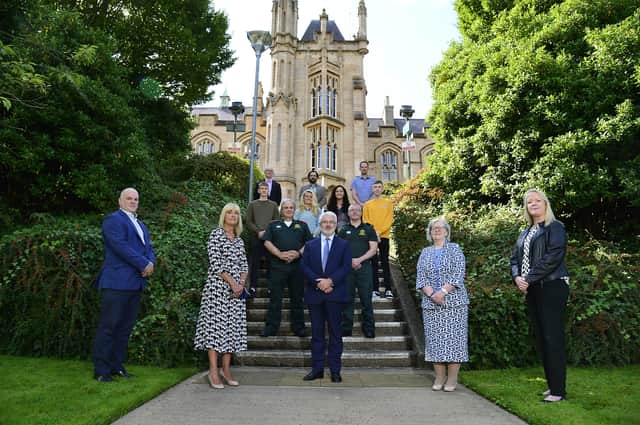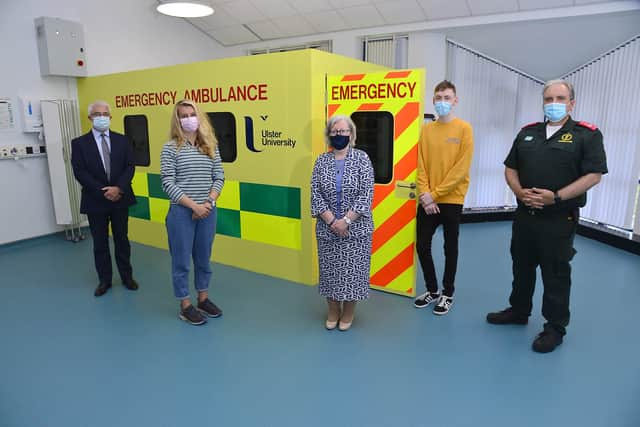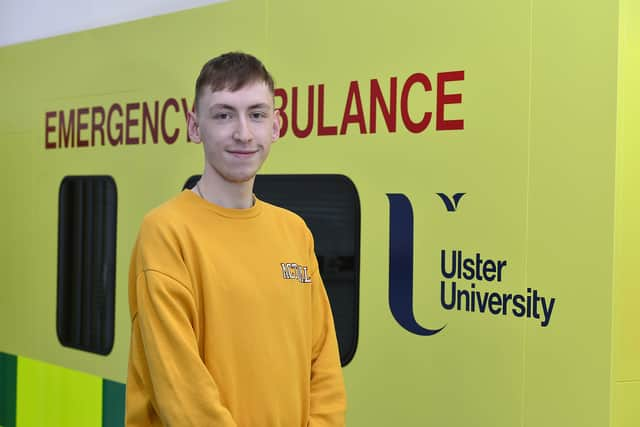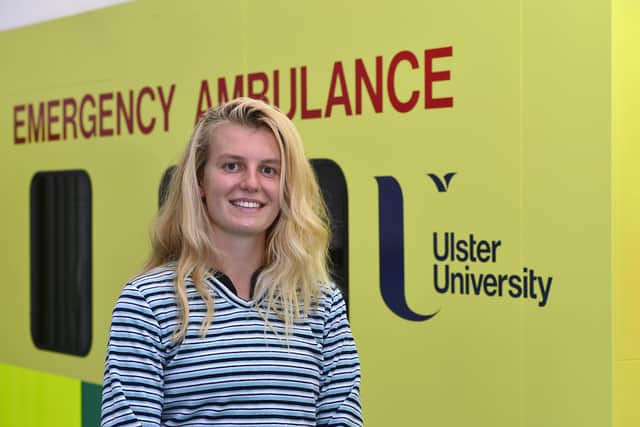UU welcomes first ever Paramedic Sciences degree students to Derry


With funding support from the Department of Health, the new three-year course will be based within UU’s multi-award-winning School of Nursing on the Magee campus.
This course is being offered by the university to support the development of the paramedic profession in Northern Ireland and wider afield. Until now, students in Northern Ireland wishing to become paramedics had to travel to the south of Ireland or across the Irish Sea to complete a BSc Hons programme in Paramedic Science.
Advertisement
Hide AdAdvertisement
Hide AdThe first cohort to be able to study this allied healthcare profession course here ranges in age from school leavers to people in their 40s. They come from a wide range of backgrounds from those embarking on a change of career from accountancy to insurance; to those working in similar fields: ambulance care assistant, lifeguard, emergency medical dispatcher and humanitarian.


Among the new students is Conor (21), from Belfast, who says: “I was eager to get on this course after working as an Emergency Medical Dispatcher during the past two years. I started a year after finishing my A-levels (when I was 19) and worked throughout the pandemic. The clear difference in call volume between pre-pandemic and during the pandemic was immense. Working with paramedics and staff of all ages inspired me to take the next step and apply for this paramedic science course. Helping people over the phone was extremely rewarding but I’m ready to have a more face-to-face and hands on role in the care of the patients I deal with rather than giving instructions such as CPR and delivering a baby over the phone!”
Olivia (32), from Kilmore, Co Armagh, is another new student. “My background is in finance. I studied accounting, graduated in 2010 and became a Chartered Accountant in 2013. I was inspired to pursue a career switch during the Covid pandemic to explore a healthcare-related career in order to make a more meaningful contribution to my community and have a more dynamic working environment. I hope that through sharing my unusual journey to this Paramedic Science course, it will encourage future applicants from non-healthcare backgrounds.”
Megan, 22, from Newcastle, Co Down, is also on the new course. “I have always been interested in becoming a paramedic but when I left school there wasn’t an opportunity to study in Northern Ireland so I opted to do a geography degree instead,” she said. “I maintained my interest in first responder care, working with the Mourne Mountain Rescue team when writing my dissertation. I have worked for the RNLI as a lifeguard for several years and also volunteer for the Coastguard which have meant I have attended lots of callouts with the paramedics attending. This really consolidated the fact that I would love to be a paramedic and here I am on day one!”
Advertisement
Hide AdAdvertisement
Hide AdA specially designed simulated ambulance - the only one of its kind in the region - has been custom built on the Magee campus so that students have access to the best simulated learning experience in order to hone their skills and confidence to excel in their future role.


Through frequent experience and learning inside this exact replica of an ambulance, coupled with 60 weeks practice-based learning with the Northern Ireland Ambulance Service and a range of other hospital and community-based experience in the other Health and Social Care Trusts and independent sector partners, they will learn a wide range of skills - meaning that, in emergency situations, they will be able to provide the very best care to people in most need of it.
The students will also have access to a wealth of specially designed training spaces from a hospital ward, simulated bedrooms and living room recreated on campus, to clinical skills rooms and a wide range of the latest equipment.
Magee is set to become a hub for Health and Innovation and these Paramedic Science students will study in a rich multidisciplinary learning environment, alongside nurses, doctors and, from September 2022, health sciences students.
Advertisement
Hide AdAdvertisement
Hide AdHealth Minister Robin Swann said of the new course: “I welcome the new Paramedic BSC programme at Ulster University. This programme will ensure Northern Ireland continues to have a sustainable supply of world class paramedics. These paramedics will be an essential part of the future Health and Social care workforce and I wish them all every success in their careers.”


Professor Owen Barr, Course Director of the Paramedic Science programme, Ulster University, commented: “Today is a great day - it marks the culmination of years of work to offer the first BSc Hons Paramedic Science degree programme in Northern Ireland, but it is only the first chapter for the 40 students who will take up their places on cohort one today. I’m excited to watch these students go on to become the paramedics of the future, playing an important part in the future development of healthcare provision across the region.”